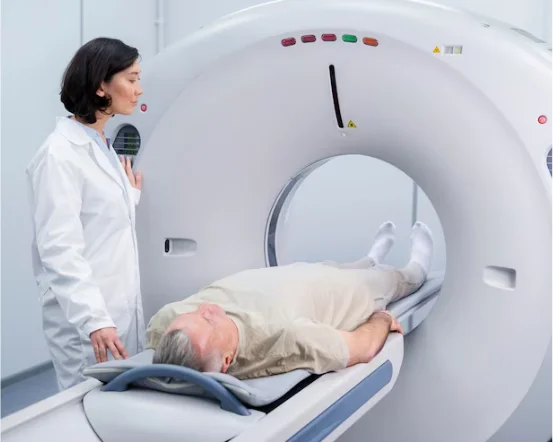Depression and anxiety disorders often appear together, and while they share some symptoms, they are distinct disorders with different root causes and treatments. Left untreated, they can lead to severe consequences, including social isolation, substance abuse, chronic illness, and even suicide. But the good news is that both conditions are highly treatable, especially when diagnosed early and managed with the right combination of therapy, medication, and lifestyle changes.
Mental health conditions like depression and anxiety disorders are some of the most prevalent and misunderstood illnesses globally. Millions of people experience emotional distress, feelings of hopelessness, and persistent worry that interfere with their daily lives. Understanding these conditions what they are, how they affect individuals, and how they can be treated is the first step toward better mental wellness for all.
What is Depression and Anxiety Disorders
Depression is more than just feeling sad or going through a rough patch. It is a serious mental health disorder that affects how a person feels, thinks, and handles daily activities. Clinically referred to as major depressive disorder (MDD), depression can persist for weeks, months, or even years if left untreated.
People experiencing depression often describe it as a feeling of being “empty” or “numb,” a loss of interest in once-enjoyed activities, and a consistent low mood that affects every aspect of life. While sadness is a common human emotion, depression goes deeper and lasts longer, often without a clear reason.
Common Causes of Depression
The exact cause of depression isn’t always easy to determine. It often results from a complex interaction of biological, psychological, and environmental factors. Some of the most common contributors include:
-
Chemical imbalance in the brain :- Neurotransmitters like serotonin and dopamine play a crucial role in regulating mood. Any imbalance can lead to symptoms of depression.
-
Genetics :- A family history of depression may increase the likelihood of developing the condition.
-
Traumatic experiences :- Past abuse, significant loss, or life-altering events can trigger depressive episodes.
-
Medical conditions :- Chronic illnesses, hormonal imbalances, and substance abuse can contribute to depression.
-
Lifestyle factors :- Poor diet, lack of exercise, isolation, and sleep disturbances can worsen symptoms.
Symptoms of Depression
Depression presents differently in each individual, but the most common symptoms include :-
-
Persistent sadness or hopelessness
-
Loss of interest in hobbies or activities
-
Fatigue and low energy
-
Changes in appetite or weight
-
Difficulty concentrating or making decisions
-
Feelings of guilt or worthlessness
-
Thoughts of death or suicide
-
Sleep disturbances (insomnia or oversleeping)
If these symptoms last for more than two weeks and interfere with daily life, it may indicate clinical depression and requires medical attention.
Understanding Anxiety Disorders
Anxiety is a normal response to stress or danger. It helps people stay alert and focused. However, when anxiety becomes excessive, irrational, and persistent, it can develop into a disorder. Anxiety disorders are characterized by chronic fear, worry, or nervousness that can significantly impact daily functioning.
There are several types of anxiety disorders, including generalized anxiety disorder (GAD), panic disorder, social anxiety disorder, phobias, and separation anxiety disorder. Each type has unique features but shares common symptoms of persistent fear and avoidance behavior.
Common Causes of Anxiety Disorders
Like depression, anxiety disorders arise from a combination of factors rather than one single cause:
-
Genetics and family history :- Anxiety often runs in families, suggesting a hereditary component.
-
Brain chemistry :- Imbalances in neurotransmitters involved in mood regulation can contribute to anxiety.
-
Personality traits :- People who are naturally more sensitive or perfectionistic may be more prone to anxiety.
-
Life experiences :- Trauma, abuse, or major life changes can trigger anxiety disorders.
-
Chronic stress :- Long-term exposure to stressful environments or situations can lead to anxiety over time.
Symptoms of Anxiety Disorders
Although symptoms may vary depending on the type of disorder, common signs include :-
-
Constant worry or fear that seems out of proportion
-
Restlessness or feeling on edge
-
Rapid heartbeat and shortness of breath
-
Trouble sleeping or staying asleep
-
Avoidance of certain places or situations
-
Muscle tension and headaches
-
Sweating and trembling
-
Gastrointestinal issues
Panic attacks sudden episodes of intense fear accompanied by physical symptoms are common in certain anxiety disorders like panic disorder.
Depression vs Anxiety: What’s the Difference?
While depression and anxiety often occur together, they are distinct conditions. Depression is primarily characterized by low mood and a lack of interest in life, whereas anxiety centers around excessive worry and fear.
However, these conditions can overlap. Someone with depression may also feel anxious, and someone with anxiety might also feel hopeless. Their symptoms often reinforce one another, making diagnosis and treatment more complex but still manageable with the right approach.
Diagnosis and When to Seek Help?
If you or someone you know is experiencing symptoms of depression or anxiety for an extended period, it’s important to consult a mental health professional. Diagnosis is typically made based on a clinical interview, self-reported symptoms, and psychological evaluations.
Conditions like depression and anxiety should never be dismissed as “just a phase” or a sign of weakness. Early diagnosis and intervention lead to better outcomes and prevent complications such as substance abuse, social withdrawal, or suicidal behavior.
Effective Treatments for Depression and Anxiety Disorders
Fortunately, both depression and anxiety disorders are treatable. A combination of therapy, medication, and lifestyle changes is often the most effective approach.
- Psychotherapy (Talk Therapy)
Cognitive Behavioral Therapy (CBT) is one of the most widely used methods for treating both depression and anxiety. It helps individuals identify and reframe negative thought patterns and develop coping mechanisms.
Other effective therapies include interpersonal therapy (IPT), dialectical behavior therapy (DBT), and exposure therapy (for specific anxiety disorders).
- Medication
Antidepressants like SSRIs (Selective Serotonin Reuptake Inhibitors) are commonly prescribed for both conditions. Medications such as benzodiazepines or beta-blockers may also be used for short-term anxiety relief under careful supervision.
- Lifestyle Modifications
-
Regular physical activity
-
Balanced diet
-
Adequate sleep
-
Reducing caffeine and alcohol
-
Practicing mindfulness or meditation
-
Building strong social connections
Even small changes in daily habits can make a significant difference in managing symptoms.
- Support Groups and Counseling
Joining a support group or speaking to a counselor can provide a safe space to express feelings, share experiences, and learn from others facing similar struggles.
Managing Mental Health in the Long Run
Mental health is not a destination but a journey. It’s essential to recognize that recovery is a gradual process, and setbacks may occur. Consistent therapy, regular check-ins with healthcare providers, and self-compassion are key to long-term well-being.
Developing a strong support system whether through friends, family, or mental health professionals can make the journey less daunting. Remember, seeking help is a sign of strength, not weakness.
Conclusion
Depression and anxiety disorders are among the most common mental health challenges faced today. Though they may feel overwhelming, these conditions are highly treatable with the right help and support. Increased awareness, education, and compassion can break the stigma around mental illness and encourage those suffering in silence to speak up and seek help.























